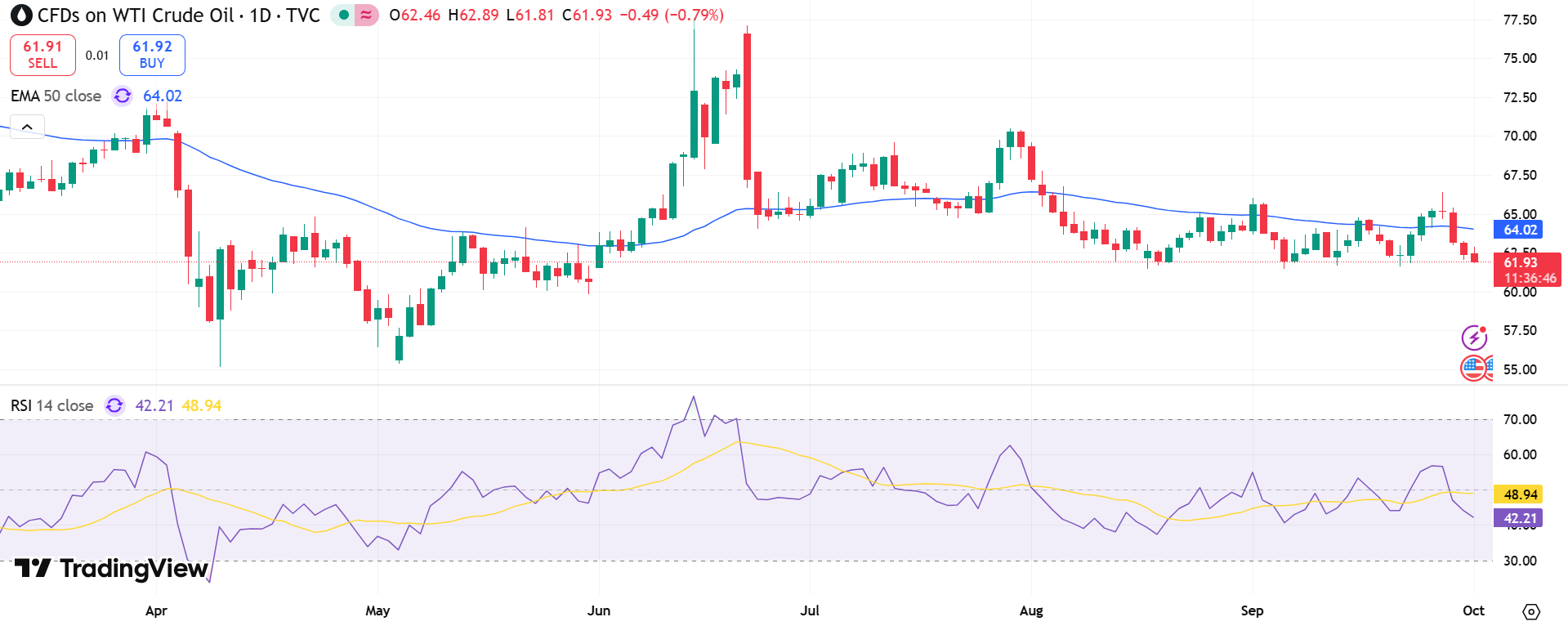Oil markets paused on Wednesday following two straight sessions of steep declines, as investors weighed fresh supply signals from OPEC+ against evidence of softening demand.
Brent crude futures for December delivery edged up 6 cents to $66.09 per barrel, while U.S. West Texas Intermediate (WTI) rose 4 cents to $62.41 by 08:35 GMT. Earlier this week, both benchmarks logged their sharpest daily drops since August 1—falling more than 3% Monday, followed by an additional 1.5% decline Tuesday.
Analysts said markets are now balancing concerns over possible output increases with disruptions in Russian energy supplies. Tamas Varga of PVM Oil Associates noted that while reports of expanded OPEC+ production fueled the sell-off, ongoing attacks on Russian infrastructure and export restrictions have redirected focus toward supply risks.
OPEC+ Signals and Russian Disruptions
OPEC+ is expected to debate whether to raise production by as much as 500,000 barrels per day (bpd) in November, according to sources familiar with internal discussions. That figure would triple October’s hike and reflect Saudi Arabia’s push to regain market share. However, OPEC officials later disputed reports of such an aggressive increase, calling them “misleading.”
Meanwhile, Russia extended its export curbs. Moscow imposed a partial ban on diesel exports and prolonged an existing gasoline ban through year-end, following Ukrainian strikes on energy infrastructure. These measures are expected to tighten global product supplies heading into the winter.
Market highlights:
- OPEC+ could raise output by 500,000 bpd in November.
- Russia extended gasoline export ban to December 31.
- Diesel export restrictions now add pressure to global markets.
U.S. Data and Asian Demand Pressures
In the United States, industry reports showed mixed signals. The American Petroleum Institute (API) estimated last week’s crude stockpiles fell, while gasoline and distillate inventories rose, pointing to uneven fuel demand trends. Analysts warn that although crude inventories continue to decline, the slower pace of drawdowns has reduced bullish momentum.

Globally, fuel consumption outlooks dimmed further after factory activity data from Asia—home to the world’s largest oil-consuming economies—showed contractions across most major manufacturing hubs in September.
The macro picture was clouded further by a U.S. government shutdown, which threatens to delay key economic reports such as the September jobs data. The lack of official indicators could leave energy traders with fewer cues as they weigh consumption forecasts heading into the final quarter of 2025.
For now, oil remains stuck between the tug-of-war of supply risks from Russia and OPEC+ policy shifts, and demand concerns from slowing global manufacturing and U.S. policy uncertainty.


